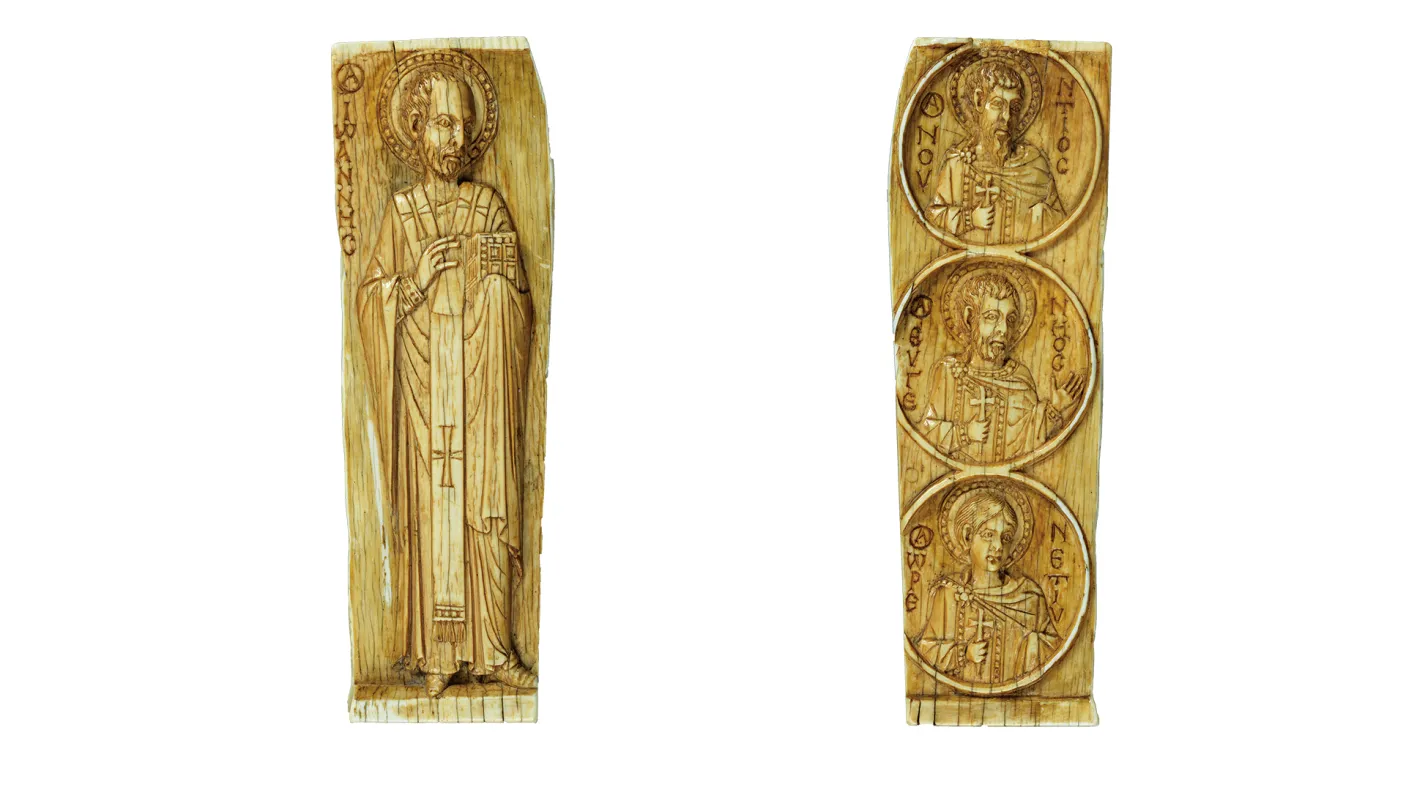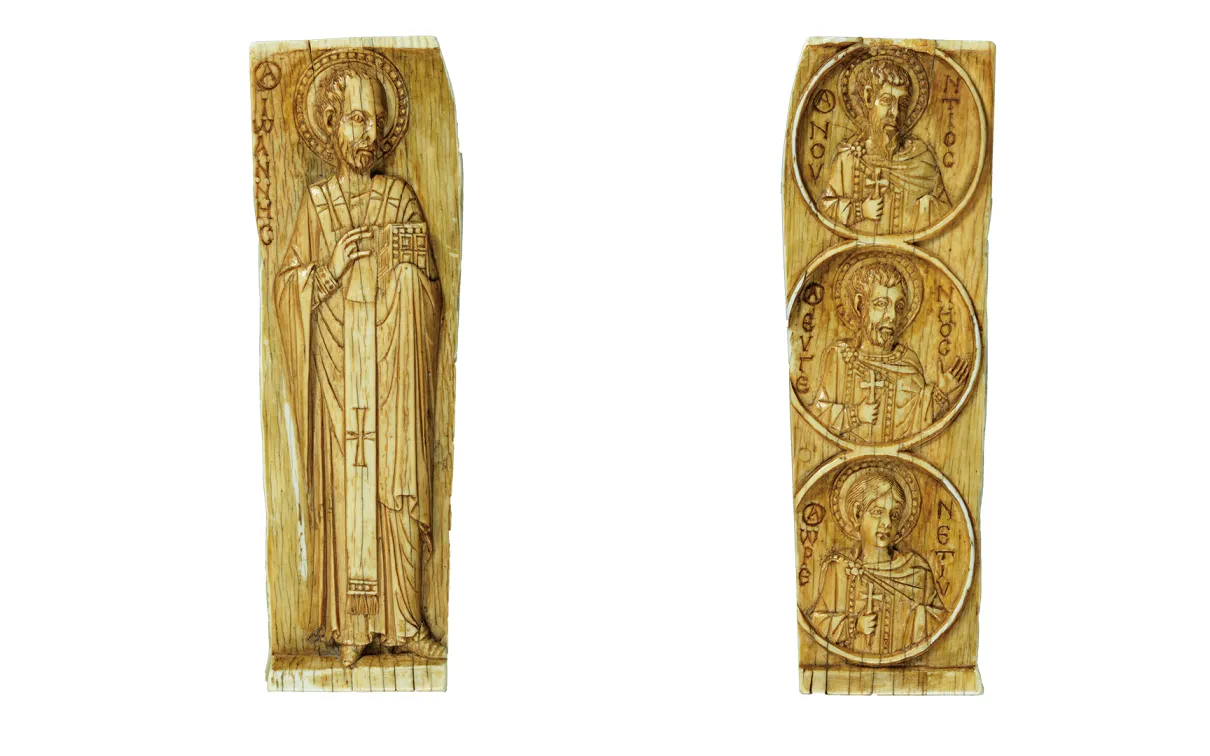A Rare Example of Byzantine Art
An ivory panel, made for the Imperial Court, on display at the ROM.
Published
Categories
Author
Byzantine art flourished once again
Byzantine art flourished once again, after Iconoclasm ended in 843 CE, the period that banned the use of all figural images in religious art for about a century. This blossoming of the arts began in Constantinople under Basil I, the first Macedonian emperor, and the era is referred to as the Macedonian Renaissance after the ruling dynasty (867–1056 CE). These emperors were both scholars and patrons, who reintroduced images from the life of Christ and the saints into all facets of the arts, including works in precious metal and ivory. Some of the highest-quality ivory carvings were produced during a relatively short period of time of about 100 years, spanning the 10th century.
The ROM is fortunate to receive, on long-term loan, a very rare and exquisite double-sided Byzantine ivory panel, crafted during this golden era around 950–1000 CE. One side is carved with a full-length figure of Saint John the Evangelist, with an accompanying Greek inscription o a(gios) ioannes (St. John). The other side bears three medallions, each enclosing a bust of a male martyred saint and accompanying Greek inscriptions identifying them respectively as o a(gios) nountios(St. Nountios, an enigmatic name), o a(gios) eugeneos (St. Eugenios) and o a(gios) orentiu (St. Orentios). Although the hinges are lost, it is clear from a comparison with surviving ivory carvings that it would originally have formed the left-hand wing of a triptych, likely with the figure of St. John being on the outside and the three medallions with saints on the inside.
St. John is depicted as the elderly—balding and bearded—visionary evangelist. He stands frontally with his haloed head in three-quarter view. He holds a book of scriptures in his left hand and blesses with his right. His elaborate liturgical vestments, worn in layers, are beautifully rendered in deep and soft overlapping folds. Although carved on a small scale, St. John has a statuesque quality with tall, slender proportions.
On the opposite side, the busts of the three martyred saints are shown frontally with their nimbed heads in three-quarter view. Saints Nountios and Eugenios are bearded and look older than the clean-shaven Orentios. Each saint is holding a small cross in their right hand, which signifies their martyrdom. The trio is shown in splendid courtly attire wearing a long cloak decorated with an embroidered panel over a long-sleeved tunic with beaded cuffs. Their garments are richly detailed with crisscrossing folds, and a rosette-shaped fibula fastens each cloak over their right shoulders.
Great care was taken in the very fine modeling of their individualized facial features, locks of hair, and beards, giving each of the four saints a distinct character and personality.
The aesthetic appeal and first-class quality of workmanship suggest that the ROM’s panel was carved in a workshop that was employed largely to serve the imperial court in Constantinople. Because of their refinement and elegance, Byzantine ivories of the Macedonian Renaissance were highly sought after even outside the Byzantine Empire. Their influence was widespread, inspiring both large- and small-scale sculpture in Western Europe and the Orthodox countries.
Paul Denis
Paul Denis is Assistant Curator of the Greek, Etruscan, Roman, and Byzantine collections at the ROM.


